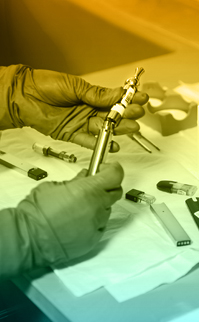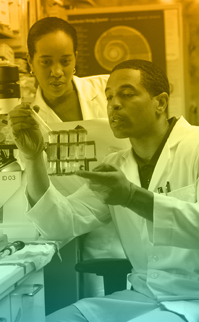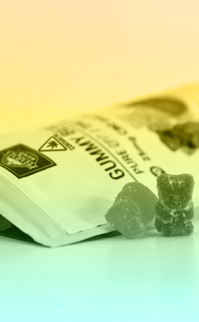Introducing cannabis to “mainstream” communities and consumers around the world hinges on successfully redefining what people have been taught about the plant, and simultaneously working to break down the stigma of both cannabis, and cannabis users around the world. One of the most influential ways we can do that is through a commitment by cannabis brands to developing, producing, (and marketing) consistent, quality products – and, many brands are making their mark in this space by doing this already. What you do matters – but how you do it – matters even more. In an industry as new and as misunderstood as cannabis is, perception is reality, for consumers, regulators, and the general public. Your brand is represented by what you post on social media, the shape of your gummy, the imagery on your advertisements, the attitude of your CEO, but most importantly, the consistent effect your product provides, that your customers and patients can depend on.
For cannabis brands, there’s a lot to think about, and we haven’t even gotten to the role local and state regulations play into those product development and branding decisions. And, as we’ve learned, cannabis regulation doesn’t stop, even during a pandemic. In fact, it has accelerated, as oversight, research, and public health and safety concerns continue to change. Here at Simplifya, we’ve made 219 COVID-related regulatory content updates across 76 state, county, and local jurisdictions since mid-March. As states begin to reopen, now more than ever, it is critical to understand what regulatory changes have been made regarding planning, staffing, social distancing, and even face-covering requirements. To help you focus on what’s important and needs priority attention, we’ve put together our top seven cannabis compliance tips for manufacturers.
Compliance Tips for Manufacturers # 1: Research your Rules and Regulators
When it comes to manufacturing, there are a significant number of regulations and regulators that oversee your operations. Let’s break it down. Compliance Tips for Manufacturers
State and Local Cannabis Rules
Each state has specific areas of priority that they focus on more than others. Some states, like California, separate their manufacturing licenses by the type of solvent used. Determining what solvent you use for extraction may be decided for you, based on where you’re located and what the local officials, especially the fire and building department, mandate. Using certain flammable solvents like ethanol or hydrocarbon (butane or propane) in certain jurisdictions may require you to build an explosion-proof room. Even CO2 extraction should be taken seriously and include an investment in a closed-loop system. The first step in planning for your extraction system is to uncover where the oversight is coming from; your county public health department, an industrial hygienist, or another organization. Get to know the details of who and what they expect. Invite them to do a walk-through and provide some suggestions before you start building or purchasing equipment. Show them that safety for your staff, the end product, the community, and first responders, matters to you. Installing extraction equipment can be quite expensive, so confirm you know all the rules before you get into the game.
Occupational Safety and Health Administration (OSHA)
All companies must follow the Occupational Safety and Health Administration (OSHA) standards and requirements and all employees have rights as it relates to risk and safety. OSHA’s mission is to ensure safe working conditions for employees. If you have more than 10 employees, there are specific requirements as it relates to maintaining and reporting injuries and illnesses. The five most common injuries in cannabis operations are strain, cut, fall or slip, ‘struck by,’ and ‘strike.’ In order to limit the number of these accidents, establish a safety and health program by focusing on identifying your hazards, placing controls, and training your team in safe processes.
 Conduct a walk-through with your insurance company to complete your job hazard analysis, making sure to dive into the equipment you use (and how it’s used), your extraction solvents, and how the product moves around your facility. Sometimes the layout or the workflow can drastically change the risks involved. Document your safety program, employee training plan, and conduct your own self-audits to prepare your business. Purchase and supply your staff with the proper personal protective equipment (PPE) they need to conduct operations safety. Maintain your safety data sheets and train your employees on how to read and understand them.
Conduct a walk-through with your insurance company to complete your job hazard analysis, making sure to dive into the equipment you use (and how it’s used), your extraction solvents, and how the product moves around your facility. Sometimes the layout or the workflow can drastically change the risks involved. Document your safety program, employee training plan, and conduct your own self-audits to prepare your business. Purchase and supply your staff with the proper personal protective equipment (PPE) they need to conduct operations safety. Maintain your safety data sheets and train your employees on how to read and understand them.
OSHA offers free consultation visits to help you identify hazards and options to resolve them, as well as assisting in developing your safety program and providing training to your team. Manufacturing operations contain several biological, chemical, and physical hazards, including exposure to solvents, ingredients, hazardous waste, equipment, electrical, noise, and cross-contamination. Take the time to proactively address your potential hazards, before it’s too late.
Good Manufacturing Practices
The Food and Drug Administration’s (FDA) Good Manufacturing Practices (GMPs) are required to be followed, by rule, in some states including Maryland, Florida, California, and Michigan. GMPs cover different categories (food, drug, or dietary supplement), and to date, there hasn’t been a clear direction on which will be required for cannabis products, or if the categories will be different for medical vs. recreational markets.
Regardless, the goal is to develop compliance standards for your facility, personnel, processes, testing, and products. If you are looking to break into the international market, you’ll definitely want to get a handle on these requirements. Many countries in the European Union and Canada are requiring Good Manufacturing Practices for all of their cannabis businesses. In order to comply with these practices, you may wish to have someone on your team GMP certified or hire a consultant to assist. You can find the United States GMP requirements in the Code of Federal Regulations (CFR) Title 21 Part 211 for pharmaceutical drugs.
GMPs focus on the following components:
- Health and sanitation
- Pest control
- Production record maintenance
- Testing and sampling
- Process validation
- Facility requirements
- Equipment safety
- Packaging and labeling
- Handling complaints, returns and recalls
- Risk management
- Quality control
- Storage
- Employee training
- Recordkeeping
- And more – outsourced activities, water quality, computerized systems, change control, material management, etc.
If you are taking the steps towards following GMPs, be sure to carefully document your efforts as GMP certification may be required in more states in the near future. On average, companies spend 160 hours to get the documentation done, and there are only a handful of cannabis companies that are currently GMP-certified.
Food Safety
If you produce ingestible products, there is a lot of research to do before getting started. At the federal level, you’ll want to review the FDA guidance for Preventative Controls for Human Food, Part 117 of Title 21 of the CFR, and the Food Safety Modernization Act which discusses risk-based controls.
 All states have specific and varying rules governing food safety, based on facility type. As a manufacturer, you are handling food, so employee health and sanitation, cross-contamination, prevention, monitoring, and hazard controls apply. At a very basic level, for edibles, it comes down to avoiding cross-contamination, personal hygiene requirements, and controlling time and temperature.
All states have specific and varying rules governing food safety, based on facility type. As a manufacturer, you are handling food, so employee health and sanitation, cross-contamination, prevention, monitoring, and hazard controls apply. At a very basic level, for edibles, it comes down to avoiding cross-contamination, personal hygiene requirements, and controlling time and temperature.
Most local governments leave the regulation of food-related products to the state or county public health departments. And even then, much is left up to licensees to determine how to approach food safety. Many states require you to have a designated, certified food safety manager on-site at all times. Stay on top of all of the food safety rules and consider developing a preventive control program like Hazard Analysis and Critical Control Point (HACCP) to help identify and manage food safety for cannabis food products as it relates to risk. Similar to a job hazard analysis, the HACCP principles are specific to biological, chemical, and physical hazards from raw material procurement and handling to manufacturing, distribution, and consumption. Compliance tips for manufacturers
Hazardous Waste Acts
With any waste that your operation produces, you’ll need to determine if it is hazardous or not. Then you’ll want to look into the requirements for generation, storage, transportation, and disposal. The Environmental Protection Agency (EPA) defines hazardous waste as dangerous to public health or the environment. Any by-product of the manufacturing process likely qualifies as hazardous waste. All states have specific details and rules that outline how hazardous waste must be treated. Certain states, like California, define cannabis waste as non-hazardous. Regardless, you’ll want to document all of the waste that you generate and ensure that it is stored in a clearly labeled, secure container that is kept separate from other products. Compliance tips for manufacturers
Title 40, Part 260-273 of the CFR covers most of the necessary federal regulations surrounding generating hazardous waste. The Resource Conservation and Recovery Act (RCRA) and the EPA establishes basic standards on training, emergency procedures, limits, prevention, emissions, transportation manifests, and recordkeeping. In 2017, a cannabis company in San Diego was indicted for dumping 36 55-gallon drums of flammable ethanol into landfills. Avoid making a similar mistake, by learning which agency regulates hazardous waste in your state, and follow their specific requirements. Obtain your EPA identification number, determine the process for collection and storage, document all waste generated, transport via an accurate manifest with an approved transporter, and work with a permitted disposal facility. Also, establish a hazardous waste contingency plan to ensure you and your team are prepared for an emergency.
Compliance Tips for Manufacturers #2: Public Health and Safety Awareness
We’ve already discussed the regulatory bodies that oversee most health and safety requirements, including OSHA, the FDA, the EPA, and other, individual state agencies. Now let’s discuss some other aspects of public health and safety, including facility sanitation, equipment safety, consumer safety, emergency response, recall procedures, and testing.
Sanitation and Cleanliness
 Keeping your facility and equipment clean and sanitary will help to limit and prevent contamination. Especially in food-processing facilities, it’s critical to think about food-contact surfaces, employee health and sanitation, storage, and cleanliness. The goal of sanitation is to produce safe food to keep consumers healthy and safe from potential foodborne illnesses. Create a daily and weekly checklist to ensure all facility cleaning measures are taken care of, including:
Keeping your facility and equipment clean and sanitary will help to limit and prevent contamination. Especially in food-processing facilities, it’s critical to think about food-contact surfaces, employee health and sanitation, storage, and cleanliness. The goal of sanitation is to produce safe food to keep consumers healthy and safe from potential foodborne illnesses. Create a daily and weekly checklist to ensure all facility cleaning measures are taken care of, including:
- General interior and exterior cleaning and sanitation
- Control of cleaning chemicals
- Pest control
- Procedures for both food-contact and non-food contact surfaces
- Maintaining the storage and handling of all equipment and utensils
- Keeping sanitary facilities stocked and in proper working order
- Disposing of trash
With any cleaning chemicals you use, research the safety data sheets and manufacturer’s label and review the evaporation rate to determine which one is right for your application and goals. How long it takes for a chemical to evaporate off specific surfaces or containers can be important in ensuring you are not accidentally transferring a chemical like isopropyl alcohol or ethanol into your product.
Equipment and Extraction Methods
There are multiple extraction methods, types of equipment (with pros and cons), and costs associated with cannabis extraction. The cost to start-up is significant and there are still challenges in technology and extraction equipment when it comes to the resinous, complex, cannabis plant. CO2 may be considered the ‘safest’ option, ethanol the most efficient, and hydrocarbon the most versatile, full-spectrum, end product. Depending on what is permitted in your jurisdiction, the cost of production and equipment, quality of end product, employee safety, and production efficiency, you can start to narrow down the type of extraction that is right for your business. If you are going to be doing hydrocarbon extractions, it can be extremely dangerous if proper precautions are not taken. Check out this article on how to build a safer extraction facility.
Consult with your equipment manufacturer to discuss and fully understand your regular calibration, cleaning, and maintenance schedules, as well as emergency shut-down procedures. Maintain all equipment maintenance and cleaning records in your business files, as most states require it. Train everyone in your manufacturing facility on the proper procedures and responses to an emergency.
Devices and Ingredients
 As you research what type of final product you want to bring to market and type of solvent you will use in your extraction, you’ll also need to think about the consumption vehicle or device that will be used to consume your products. There are a number of different options for cartridges, vaporizers, and dabbing materials. Verify that you are selecting the right device for flow-thru rates, pricing, temperature control, heating apparatus, cartridge details, battery life, cleaning and maintenance, and partnership. Be cautious when you partner with a device manufacturer and ensure they are compliant based on your state and that they have the documentation, service, capacity, and the technology to meet your needs. Compliance Tips for Manufacturers
As you research what type of final product you want to bring to market and type of solvent you will use in your extraction, you’ll also need to think about the consumption vehicle or device that will be used to consume your products. There are a number of different options for cartridges, vaporizers, and dabbing materials. Verify that you are selecting the right device for flow-thru rates, pricing, temperature control, heating apparatus, cartridge details, battery life, cleaning and maintenance, and partnership. Be cautious when you partner with a device manufacturer and ensure they are compliant based on your state and that they have the documentation, service, capacity, and the technology to meet your needs. Compliance Tips for Manufacturers
The recent news on vaping concerns and unregulated additives has affected the concentrate space and required operators to focus on education. Many relate the issue to illicit, unregulated cannabis products and devices, and propose that legalization could be the answer to many of the vaping concerns. In addition, many states have taken a proactive approach to require all inactive ingredients be FDA-approved and devices tested to ensure there are no toxic metals leaking into the product. Additionally, many of the inactive ingredients used as cutting agents including terpenes, have not been fully researched for inhalation. More research needs to be done on the vapors and emissions from the vaporization or nebulization process. As processors, we need to be ready to make changes to our ingredients, do our own research, and ask questions about the products we’re producing. Review all artificial flavorings, terpenes, or other ingredients you are putting in your products. Examine your local and state regulations regarding inactive ingredients and even reach out to your regulators before including a new ingredient in your process. Maintain all of your records regarding active and inactive ingredients. The National Cannabis Industry Association put out this Key to Consumer Safety guidance to make recommendations for safe vaping. If you are in the cannabis vaping space, check it out.
As we continue to learn more about cannabis and the different methods of consumption, regulations surrounding testing and action limits will continue to change. Be prepared with alternative plans for ingredients, processes, and devices to get your product to market.
Emergency Response Protocols
To some degree, all states include developing and maintaining emergency response protocols as a requirement. These protocols typically address evacuation, medical emergencies, fire, flood, unauthorized access, robbery, and threats of violence.
Create a training manual for all of your safety and emergency protocols and educate and train your team to ensure they feel safe and secure no matter what may happen. No matter the emergency, the typical process is the same:
- Stay calm
- Assess the situation
- Get to a safe location
- Help others, if possible
- Alert necessary personnel or entities
- Have a point person to discuss with authorities
- Remedy any issues
- Document the incidents
- Make any adjustments to your processes
- Return your operations to normal
Regularly conduct trial runs of the different procedures with your staff to ensure understanding, compliance, and safety. Compliance Tips for Manufacturers
Create a Recall Plan
Most states require manufacturers to have a plan in place if there is a complaint, adverse event, or recall of cannabis products. Typically, there is a public health and safety announcement that goes out to the public and other licensees when a recall is placed. A recall can be required for failed testing, improper labeling, safety risks, or other reasons. Recalls can be extremely stressful, and you’ll want to be prepared. Here are a few steps that should be included in your recall plan:
- Designate a recall coordinator so you have one point of contact who is coordinating and documenting all efforts
- Develop an effective complaint management program regarding how you will respond to customer complaints
- Immediately remove or quarantine recalled product
- Investigate via your seed-to-sale tracking software to determine who has purchased your recalled product – whether licensees or consumers
- Communicate with your staff, other licensees that products were sold to, and the public regarding the recall. You’ll likely want to reach out to your legal team to help you craft your press release and notifications.
- Collect all recalled product
- Coordinate with your licensing agency for product disposal
- Document everything
- Review your recall plan and make any adjustments for the future, if necessary
Damage due to a recall is three-fold: product destruction, brand damage, and losing consumer trust. Be prepared with a plan for how to rebuild, if necessary.
Choose a Lab you Trust
 When it comes to consistency of effect, consumer safety, and product integrity, testing is key. Even though testing is an exact science, the regulations are not. The responsibility of regulating cannabis testing has fallen to states that have defaulted to creating a patchwork of different testing requirements across the country. Required testing includes for potency, homogeneity, residual solvents, toxic metals, and more. Some states have only a few licensed laboratories that are permitted to test products, while others, like Colorado, allow many.
When it comes to consistency of effect, consumer safety, and product integrity, testing is key. Even though testing is an exact science, the regulations are not. The responsibility of regulating cannabis testing has fallen to states that have defaulted to creating a patchwork of different testing requirements across the country. Required testing includes for potency, homogeneity, residual solvents, toxic metals, and more. Some states have only a few licensed laboratories that are permitted to test products, while others, like Colorado, allow many.
If you have the opportunity to select your own laboratory, ask yourself the following:
- Why are you testing your product? Does your governing body require it? Are you conducting research and development on new products?
- What type of testing do you need?
- What are you looking to get out of testing? Accuracy, consistency, standards, safety, marketing?
It’s important to work with a lab you trust. Ask for a tour of their facility and ask the following questions:
- Can you provide me with your accreditations, certifications, and licenses?
- What amount of the International Standards Organization (ISO) 17025 protocols do you follow? Can they show you?
- What is your level of experience in testing?
- What kind of equipment do you use and why?
- What is your level of variance for certain solvents, metals, cannabinoid percentages, and homogeneity?
- Do you test for other components, not required by regulation, like other cannabinoids or terpenes? How do you validate your process?
- Can you walk me through your certificate of analysis and why it’s set up this way?
- How streamlined is your process for sampling, pickup, results, and data-entry?
- How do you approach customer service?
- Will my data be confidential?
- What are your failure procedures?
- What is your turnaround time? What if you can’t meet them?
- What does your contract look like? Is it negotiable?
- What is the cost structure? Do you offer discounts?
Know the answers you are looking for before you ask your questions. Fully review the contract and understand the details. And, always have a back-up lab. In fact, always have a back-up everything – for security, recordkeeping, suppliers, vendors, funding, etc. If one company is too busy, has delays, or has contaminated products, you’ll want to have a plan to get the product and results you need to move the product out the door. Compliance Tips for Manufacturers
When it comes to cannabis, we don’t know nearly enough. Limitations and barriers in research, testing, supply, funding, and delivery methods all pose challenges to conducting proper research regarding THC and other components, which are ultimately delaying the industry’s ability to confidently offer safe and effective products to the public. When considering what types of products you will produce, do your own research, but also stay on top of the latest news and trends; because it is imperative to anticipate where you might need to pivot next. If you put all of your eggs in one basket, the result could be catastrophic for your business.
Compliance Tips for Manufacturers # 3: Focus on Supply-Chain Management
Supply chain management involves planning, sourcing, manufacturing, logistics and delivery, and returning products. If done correctly, you can maximize your costs, as well as improve turn-around time and efficiency.
Over the last few months, during the COVID-19 pandemic, plenty of challenges, bottlenecks, and pitfalls of the cannabis supply chain have become more apparent. The need for centralized purchasing and the ability to shift with consumer trends is necessary. And always – always have a back-up plan when it comes to raw materials. The Economic Policy Institute estimates that at least 50% of small businesses will not survive this pandemic, potentially leading to a decrease in competition and an increase in price, making it harder for those companies to maintain operations. The next few months will be a struggle for many, especially as federal tax payments are due.
Vet your suppliers
 The cannabis space has a unique supply chain, mostly due to the seed to sale tracking, regulatory oversight, lack of company stability, financial capital, and inconsistent supply and demand.
The cannabis space has a unique supply chain, mostly due to the seed to sale tracking, regulatory oversight, lack of company stability, financial capital, and inconsistent supply and demand.
In order to process cannabis, you need to determine what kind of raw material you need for your final product. And based on what kind of finished product you are looking for, the raw material needs to be the ‘right’ choice. When vetting your raw materials and suppliers consider quality, consistency, and service. Ask your suppliers the following questions:
- What ingredients are used in the cultivation or processing of your product?
- What are your cleaning and sanitation procedures?
- For the first few weeks, are you willing to conduct testing and provide those results with us?
- How consistent are your products?
- What plans do you have in place if you run out of product?
- Do you have references I can talk to?
- What is your company culture like? What are your core values and mission?
- What is your payment structure?
Think about not only your cannabis materials, but also your packaging and labeling materials. Request (and require) a copy of their packaging certifications and ask questions about where the core materials are sourced from. Try to buy American-made materials and products from companies with sustainable practices and help to decrease your carbon footprint and minimize delays.
Product Selection
Be thoughtful about the products you decide to develop. As much as you want to be able to meet the needs of the consumer, it’s important to pick a lane, and commit to the process, quality, and consistency of your product. Determine your differentiator, identify your consumer, (market your brand and your product to them), ask for their feedback, and make adjustments. Be careful not to switch gears entirely or too quickly, as it may hurt your brand and business more than help it. Think about the types of products that people want to continuously consume. Focus on your core competency, and who you are as a brand, and do it well. Compliance Tips for Manufacturers
Select strains that provide better taste, greater yields, full-spectrum effects, and quality concentrates. For topicals, select inactive ingredients that have been proven to work, like menthol, essential oils, aloe vera, or cocoa butter, and are ethically sourced. Dial in your dosing and research the CBD market and determine if a THC:CBD ratio is right for you. Evaluate your price per gram, and confirm it fits your market, because it is how consumers and the industry are assigning value and fair pricing.
Supply Chain Best Practices
You can fine-tune your supply chain management by maximizing product flow, production costs, and creating a culture of continuous improvement. Although many of these tips aren’t necessarily compliance musts, we recommend that you take the time to consider them as part of your best practices.
In terms of facility design and manufacturing practices, invest in hiring someone that has experience with both supply chain and operations management. This will help you to create more efficient and streamlined processes, with daily goals and visual reminders, that will allow for flexibility and quick adjustments to your process. Compliance Tips for Manufacturers
 Examine your product flow, both digitally and physically, by mapping out how your product moves throughout different production stages, and throughout your facility. Determine where there is wasted time, overlapping routes, and opportunities for improvement. This goes hand in hand with the idea of dedicating yourself and your business to continuous improvement. You can use Lean Six Sigma principles, Value-Stream mapping ideas, a Kanban system, Kaizen, or any combination of them. Any of these methods work, as long as it is driven and supported by leadership, integrated into your culture, and everyone commits to it.
Examine your product flow, both digitally and physically, by mapping out how your product moves throughout different production stages, and throughout your facility. Determine where there is wasted time, overlapping routes, and opportunities for improvement. This goes hand in hand with the idea of dedicating yourself and your business to continuous improvement. You can use Lean Six Sigma principles, Value-Stream mapping ideas, a Kanban system, Kaizen, or any combination of them. Any of these methods work, as long as it is driven and supported by leadership, integrated into your culture, and everyone commits to it.
The common thread to success with any of these models,involves knowing your product and who your consumer is, understanding how the work gets done, communicating task changes, removing bottlenecks and addressing issues, minimizing human error, asking for feedback, being flexible, and making changes. Just like with product movements, you’ll want to identify areas of wasted energy during your processes, discuss with your team and make adjustments. The more open you are to feedback and continuous improvement, the more agile you’ll be in this fast-paced industry.
One major process improvement all cannabis manufacturers should examine is in regard to raw material procurement, yield, and extraction efficiency. To put it simply: are you looking at your data? Yield and efficiency are both essential and yet very different indicators of a successful extraction. Yield is the mass extracted, and extraction efficiency refers to the amount of THC available and the amount that was captured. The goal of a cannabis extraction process is to pull as much THC out of the starting product, and different methods and equipment are more or less efficient with this. Typically when extracting flower into oil, whether through CO2 or a hydrocarbon, you should shoot for at least a 10-15% yield and efficiency of 85% or higher. Take the time to experiment with your extraction to determine the right settings of temperature and pressure to increase yield and efficiency.
Understanding the economy of extraction and all of your production costs, including oil conversion costs, post-processing, testing, packaging, distribution, and taxes, can be essential to maximizing your bottom line. If you haven’t done time trials, do them. This is necessary information in order to understand your true production costs. Breakdown the process by steps to determine where your backlog or ‘wasted energy’ is, as well as where you could invest in the biggest improvement. Think of ways to reduce your cost per gram, whether that is through raw materials, oil conversion, packaging materials, PPE, packaging and labeling time, distribution, or easy in and out storage.
Establish Inventory Control Measures
Tracking and managing your inventory is a significant requirement for all cannabis licensees. As a manufacturing company, you have more products coming and going than any other licensed operator. Developing a standardized process for inventory maintenance and auditing is just as important, if not more, than supply chain management. Compliance Tips for Manufacturers
When conducting audits, document the details of the inventory covered and all of your findings. If discrepancies are found, handle them early and often. The longer you wait to address them, the more difficult it may become to investigate and correct. Separate your daily inventory audits into manageable chunks – raw materials, in-process (by category), in-transit, R&D, finished product, and quarantine (testing, for disposal, or other). Don’t take shortcuts – keep your inventory records in order.
If you find evidence of theft or diversion, review your regulations to determine what your requirements are to report. Conduct investigations and review video footage, as well as update your processes to ensure it doesn’t happen again.
Compliance Tips for Manufacturers #4: Have a Flexible Packaging and Labeling Plan
 Over the last several years of cannabis regulation, the changes and differences in labeling requirements have been significant, and the demand for more green, affordable packaging is growing. It can be extremely difficult for cannabis companies to become more sustainable, as strict regulations can sometimes get in the way. Start looking for eco-friendly packaging, and verify they meet all the criteria you are looking for, including that the materials are naturally sourced, biodegradable or recyclable, and FDA-approved for food. Compliance Tips for Manufacturers
Over the last several years of cannabis regulation, the changes and differences in labeling requirements have been significant, and the demand for more green, affordable packaging is growing. It can be extremely difficult for cannabis companies to become more sustainable, as strict regulations can sometimes get in the way. Start looking for eco-friendly packaging, and verify they meet all the criteria you are looking for, including that the materials are naturally sourced, biodegradable or recyclable, and FDA-approved for food. Compliance Tips for Manufacturers
Packaging changes can be extremely costly as many manufacturers build up their supply and buy packaging and labeling materials in bulk in order to save on costs. Talk to your packaging material supplier about buy-backs in the event you need to pivot, or packaging regulations change. Identifying the right packaging partner and finding the sweet spot between sustainability and safety are just two of the issues in cannabis packaging. If you can invest in your own label or mobile printer, it could be well worth it to provide more flexibility. Start looking at the FDA drug and food labeling, GMP, and other industry guidance to prepare for a recalibration when federal legalization happens. Compliance Tips for Manufacturers
Although there are several requirements for cannabis businesses regarding childproof and sustainable packaging, the demand (in quantity alone) is pretty small compared to large food or consumer packaged goods (CPG) companies that can invest in larger quantities of packaging. The difference in regulations from state to state also makes it hard for any packaging company to fully invest in one type of childproofing. It is likely to take a standardization in packaging requirements and an investment from other industries to drive the cannabis packaging industry forward. There is a lot of attention and momentum in packaging, including from the hemp industry. Major food and beverage companies are targeting 100% recyclable and reusable packaging by 2025 and California is requiring a statewide reduction in single-use packaging by 75% by 2030, so the likelihood for more sustainable packaging available at a reasonable cost to the cannabis industry and the consumer is not too far away.
Compliance Tips for Manufacturers # 5: Secure your Facility and your Product
Facility security is a requirement for all licensees. Your security systems should focus on the following areas: regulating access, keeping your product secure (storage and transportation), tracking your inventory, setting up automatic notification alerts, and keeping digital records.
As the product gets closer to its final form, the more likely it is at risk for theft. Invest in secure storage containers or safes and limit access to authorized, trusted employees. Change your security codes and locks regularly. Vet and find a security company that understands the regulations in your area (state and local) and goes above and beyond to monitor and assess your systems.
 Secure transportation in cannabis can be extremely challenging. Unfortunately, traditional companies with years of experience in security and logistics like UPS or FedEx are not an option. So, most companies are left to figure out their own logistics, within the constraints of the state and local guidelines. Transporters can be employees of your company or third-party licensed distributors that you contract with, but either way, they must be licensed by the state. Some states require you to send transportation manifests or daily delivery schedules to local or state authorities, so they are aware of your deliveries. Understand what’s required of your business and stay on top of it.
Secure transportation in cannabis can be extremely challenging. Unfortunately, traditional companies with years of experience in security and logistics like UPS or FedEx are not an option. So, most companies are left to figure out their own logistics, within the constraints of the state and local guidelines. Transporters can be employees of your company or third-party licensed distributors that you contract with, but either way, they must be licensed by the state. Some states require you to send transportation manifests or daily delivery schedules to local or state authorities, so they are aware of your deliveries. Understand what’s required of your business and stay on top of it.
Most states have some form of transportation safety rules, including prohibiting transportation vehicles from having any kind of logo or image that depicts or suggests that cannabis products are inside the vehicle. Some states require GPS tracking or other technologies, as well as video surveillance systems, alarm systems, and devices that can help to mitigate transportation risks. Setting up systems and procedures is important, but training and education are more important.
As cannabis becomes a more legitimate and federally accepted industry, the safer and more secure product transportation will become. Until then, take the necessary steps to secure your product and your processes. Some companies are now offering insurance policies for transportation. As with all contracts and insurance policies, read the fine print and ask a lot of questions regarding exclusions, so you don’t get caught off guard.
Compliance Tips for Manufacturers # 6: Standardize
Product and Brand Consistency
When it comes to cleaning, product-flow, inventory management, product processing, training, education, financial management, and business development, it comes down to two things: documentation and communication. As you document and verbalize your process, you find the gaps, allowing yourself the opportunity to fine-tune your methods and ingredients. As you fine-tune, you establish more standardization, which lends itself to consistency of your process, your product, and your brand. Research and review your final products and have quality-control measures in place to check that the effects and potency are consistent.
Streamlined processes and workflow
 Create a comprehensive set of standard operating procedures so you can protect your business and meet your regulatory requirements. When regulators find an issue, the first thing they will ask you is about your procedures and how you can prove your process.
Create a comprehensive set of standard operating procedures so you can protect your business and meet your regulatory requirements. When regulators find an issue, the first thing they will ask you is about your procedures and how you can prove your process.
Documenting and understanding your processes and workflow allows for easier and more effective training, accountability, flexibility, and continuous improvement. Over time, the need for more standardization in the cannabis industry will increase in order to improve product safety, consistency, and predictability. Cannabis companies can look to other industries to find the right methods. Consumer packaged goods (CPG) companies follow certain standard operating procedures and those learnings can help to provide guidance to cannabis manufacturers. The American Society for Testing and Materials (ASTM) is an international organization that establishes standards across industries. They have established a committee on cannabis and are developing standards for the cannabis industry on a wide range of topics including cultivation, processing, dispensing, security, transportation, packaging and labeling, testing, and more.
By streamlining your processes and workflow you prepare your business to scale. You’re able to manage your growth and your margins, providing your business with more opportunities – proving your operational maturity, efficiency, and reliability – positioning yourself for whatever comes next.
Record-keeping
Recordkeeping is vital to remaining in compliance and running a successful business. Do your research and know what documents you are required to keep for compliance. Documentation not only makes you look good and prepared; it allows you to track your business’ progress and shows regulators and investors that you care about what is required of you to stay compliant.
Keeping accurate records helps you to streamline your processes, track your progress, make quick decisions, create a vision for the future, and build your portfolio for growth, acquisition, or sale. Verify that all of your files are backed-up and secure. This is especially important in the medical industry where patient information is maintained. Control access to your documents and keep them organized for easy searching and availability. All states require businesses to have their records, including seed-to-sale tracking information, available and provided within short timeframes. Having your records organized will alleviate stress and complications.
Prepare for Modifications
With the uptick in legalization and consumption, consumers are starting to share, through their purchases, what products they are looking for. The market has shifted in the last couple of years from flower to concentrates and will continue to evolve as cannabis consumers evolve and grow. How are people using their cannabis? Are they looking for a large dose in one serving or a microdosing experience? And are you ready to meet their needs? Cannabis trends, including analytics-driven predictions, are starting to emerge, and looking to brand-driven consumer goods can help you to determine how to analyze trends and capitalize on the next big craze. Do your research, vet your sources, hold a focus group, and start planning.
Why is this important to compliance? As you consider making adjustments to your product selection or processes to meet the market demands and changes, modifications to your current business processes will likely be required. Depending on your local and state regulations, change may be harder than you think. Some local municipalities require ample notice (sometimes between 30-60 days) before making any modifications to your facilities, processes, or products. Then you have to consider obtaining or changing building permits, inspections, contractors, etc. It’s important to know ahead of time what actions require your licensing authority’s approval. If you have questions, reach out to your local regulators to see what qualifies as a material change to your building or process, and plan accordingly.
Compliance Tips for Manufacturers #7: Hiring, Training, and Transparency
 Building your team is worth investing the extra time to get it right. Ask the right questions when interviewing, do your homework, and definitely call their references. When hiring, don’t feel like you have to settle; at this point in the cannabis industry, success will be reliant on finding candidates with the right experience, characteristics, and work ethic for the positions you are looking to fill. You are in a position to create a diverse culture and workforce at all levels; diversity in race, gender, skill sets, age, and personalities. The more diverse your workforce, the more perspective you have as a business and as a brand. Cannabis, like other industries, has a long way to go to become more racially diverse. Now, more than ever, we have a responsibility to take the steps necessary to help right the ship.
Building your team is worth investing the extra time to get it right. Ask the right questions when interviewing, do your homework, and definitely call their references. When hiring, don’t feel like you have to settle; at this point in the cannabis industry, success will be reliant on finding candidates with the right experience, characteristics, and work ethic for the positions you are looking to fill. You are in a position to create a diverse culture and workforce at all levels; diversity in race, gender, skill sets, age, and personalities. The more diverse your workforce, the more perspective you have as a business and as a brand. Cannabis, like other industries, has a long way to go to become more racially diverse. Now, more than ever, we have a responsibility to take the steps necessary to help right the ship.
Train your team on all of the above compliance tips and reinforce that training through consistent coaching and check-ins. Understand why training and investing in your employees is important for your bottom line. Create a training plan, document it, and have your employees sign off, indicating their understanding of the process, and holding each other accountable. Make compliance, inventory, security, and recordkeeping audits a priority. Assign regular audit checks to validate your own compliance so you are prepared for an inspection.
A large contributor to building an effective team is transparency, especially with the new generation of workers. Explaining the ‘whys’ behind your decisions and processes grounds you and provides a clear direction, reinforces the reason for your efforts, and creates the possibility for trust and growth. It also has a tendency to increase someone’s likelihood to comply. Organizational change will inevitably happen to your company at one point or another, especially in the evolving cannabis space. Be prepared to communicate these changes and your reasonings behind your decisions to your team, even if you don’t have all the answers. Empower your team with a compelling vision for the future and explain why the change is necessary.
Cannabis Manufacturing Compliance
 When it comes to processing cannabis, we still have a lot to learn and progress to make. With that comes the opportunity for agility and anticipating market trends, testing requirements, and brand positioning — but also the responsibility to manufacture products that are safe, tested and in compliance with all applicable rules and regulations. Attend meetings and workgroups held by your state and local regulatory agencies to learn what their top priorities are, their concerns about the products you make, and what type of regulatory changes might be coming next. Preparation is critical to your business’ success in this industry.
When it comes to processing cannabis, we still have a lot to learn and progress to make. With that comes the opportunity for agility and anticipating market trends, testing requirements, and brand positioning — but also the responsibility to manufacture products that are safe, tested and in compliance with all applicable rules and regulations. Attend meetings and workgroups held by your state and local regulatory agencies to learn what their top priorities are, their concerns about the products you make, and what type of regulatory changes might be coming next. Preparation is critical to your business’ success in this industry.
If we have learned anything in the last 10 years of cannabis legalization, it is the importance of first focusing on achieving modest foundational growth, knowing your core competency, documenting your efforts and processes, making compliance and training a priority, and investing in the right experience and personnel.
Ultimately, the effect that the actions of one business can have on the entire cannabis industry is exponential. You are not just in business for yourself, but as a steward and representative pushing the cannabis industry forward. Make your business decisions with that in mind; the legitimacy, acceptance and success of the industry is in all of our hands. Compliance tips for manufacturers
We hope you’ve found some nuggets of wisdom in our compliance tips for manufacturers. For more compliance tips, check out our blogs on the Top Five Cannabis Compliance Tips for Retailers and the Top Ten Cannabis Compliance Tips for Cultivators. Here’s to staying compliant!
